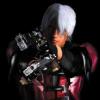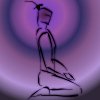[color="#ffd320"][font="Harlow Solid Italic, fantasy"][size="7"]Practical Treasures[/font]
[size="5"]Concept: An isometric side/vertical scrolling game in which the player is able to switch between worm-eye and bird's-eye views and travel down intersecting hallways. The player moves through these dungeons by using the mechanics to figure out how to get from point A to point B like in a Metroid game. The goal of the player is to find and defeat all enemies in dungeons using the many treasures that s/he may find in the dungeons, such as gold coins, bejeweled ceremonial swords, vases, statues, jewels, and exquisite armors, usually by tossing them, standing on them, jumping off of them, feeding them to enemies, etc. Any unused treasure gets turned into money that the player can spend in one of the town dungeons on the Mega Man menu screen-like world map in order to get NPCs to give him/er more interesting dialogue like hints as to where events, secrets and puzzle solutions are or even to buy unique treasures one can't get anywhere else. As the player completes dungeons the world map expands like a web with hidden paths to new dungeons both within the dungeons and on the world map menu itself (think invisible paths that a stray directional button press might send you down). Completing all dungeons and defeating the final boss (a dungeon in itself) earns the player a stat sheet detailing their final score based on completion time, lives used, treasure converted to money throughout the game, and the final amount of money in the player's possession along with the credits and the “You have won!” screen.
[size="5"]Controls: All controls are customizable, and these descriptions are of a general control layout. Holding RIGHT makes the player move forward. Rapidly tapping right before holding down RIGHT will increase the speed of the PC for a short amount of time. Tapping UP causes the PC to move away from the screen. Tapping DOWN causes the PC to move toward the screen. Holding DOWN causes the PC to crouch. Tapping LEFT causes the player to turn in the direction opposite of which s/he is facing. There is JUMP/INTERACT button (z) that can be tapped to jump, interact with an NPC (progress dialogue) or mechanism, or pick up a treasure. Holding JUMP down longer increases the jump height. There is a USE/BACK button (x) to cancel actions, return to earlier parts in NPC dialogue, and activate treasures. The MENU button (c) takes the player to his/er treasures that can be selected using the DIRECTIONAL buttons and INTERACT button. MENU is also where the game can be saved and quit to the title screen and where a level can be exited. Finally, there is a SWITCH (a) button used to change the isometric view between bird's-eye and worm-eye views.
[size="5"]On-Screen: At the game's start players will see the title screen displaying prominently “Practical Treasures” near the top, “New Game” below that with an arrow cursor to the left of it, “Continue Game” below that, and the studio name (“Lava Floor Studios”) and copyright year at the bottom of the screen. New Game loads the game from the beginning, while load game will take one to the save files of existing in-progress games. The player will see on-screen the number of lives they have left in the upper right corner, represented by a light blue cat ghost with a X symbol and a number. The upper left-hand contain the characters current health, represented by a gold crown and pearl necklace with X symbol and the current number of treasures in the player's inventory. The bottom left-hand corner is where the PC will always be pictured, represented by a spiky, black-haired female youth in a red biker jacket, baggy beige cargo pants and black, red-stripped shoes.
[size="5"]Game-Play: Game-play consists of running and jumping through levels using various treasures to surmount obstacles and defeat enemies. Some examples of using treasures are: shimmying on ceiling pipes and cables with necklaces; sticking swords in the ground at an angle to be jumped on like trampolines to reach higher platforms; hiding in armor; putting vases over enemies heads or breaking them to attract enemies; pushing statues over on top of enemies; hitting targets at a distance with coins and jewels; etc.
If an enemy or trap harms the player some of their treasure will fly into the air and need to be caught before they crash on the ground, losing some of the PC's health. Losing all treasure costs a life and restarts the PC at the beginning of the current screen just like Zelda II. The player begins with five live and will be granted between 1 and 8 additional lives for patting a cat on the head by pressing INTERACT while the PC is near it, even if you have to run and jump after it to do so.
After defeating all enemies in a level a congratulatory sound of whistles and clapping plays as the PC takes a bow toward the screen. The only thing left to do is find one of the exits in the level. Different exits open different sections of the level menu world map. Sometimes pressing a directional button while the PC cursor is in transit between levels can lead her to hidden levels (identified with question marks) that expand the game but are not necessary to complete the game and are not necessarily of the super challenging variety.
Certain levels are designed like towns where you can trade money converted from treasures remaining at the end of a level for both special and generic treasures to be used in the dungeon parts of these town levels. Some of these special treasures can survive falling on the floor a certain number of times if an enemy or trap knocks them from the PC while others allow for special puzzle-solving (keys that unlock doors if you win a puzzle mini-game) and combat (ancient weapons like Smart Bombs that destroy all enemies on screen or cause large pits to close up) actions, and still others are useful for increasing your money by a significant amount if you hold onto them for a specified number of levels (they are not converted to money until then). You may also just want to have some starting health before moving on to the dungeon parts of the current town level or other levels.









